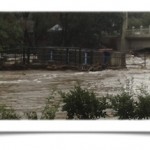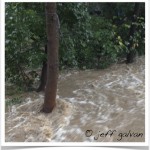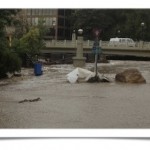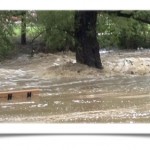Record Breaking Years
Drought fueled forest fires, including the worst in Colorado’s history (Fourmile Canyon), to this year’s record spring snowfall and now flooding in Boulder – the changes in our climate over the last several years have been especially challenging on both the people and trees here in Boulder county.
Trees in Boulder, Colorado
Last year we had a spring that came 3 months early and not much water to help the trees that were developing so early. The early warm weather allowed most the fruit trees to maintain their flowers long before the average last frost date. The results were as diverse as trees suffering from drought to the fruit trees having an unusually early bumper fruit crop (Read: Apples 2012).
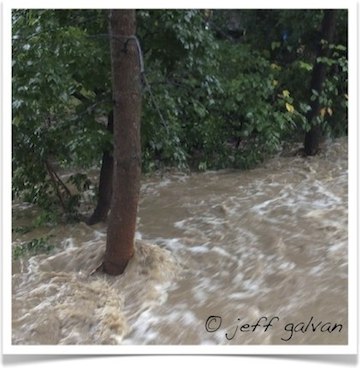 2013
2013
This year it was starting to look like the same was going to happen. The weather began to warm up and many trees were flowering and their leaves began to grow. Then, it began to get colder and started to snow. By the end of May – Colorado had set a new record of snow fall for the month of April. The cold had not only killed many of the early buds on trees (especially ash trees), it froze the flowers on most trees. The result was – not much fruit this year. No apples, plums, peaches, apricots or pears (unless they were in an area protected by the hard frost). Other trees have been hit hard this year included: ash, aspens, pines and maples.
These back to back extreme climate changes have severely stressed the trees in this area of the Colorado, Rocky Mountains.
And now…
Flooding
Another historical record was broken this week when Boulder’s yearly precipitation exceeded 30 inches (over 14 inches between Monday and Friday – more than twice the amount of any other storm). The average precipitation for September here is 1.6 inches and this month’s total is more than 16.5. The last record amount of rainfall for September was 4.89 set in 1961.
It may be months or even years before trees begin to show signs of stress caused by the flooding in Boulder county and by the pollutants that often are found in flood waters.
So why are calls for emergency tree removal services beginning to come in?
Mechanical Damage Caused by Floods
The affects that flooding has on trees sometimes takes times to see, at other times, the damage is immediate. Mechanical damage caused by torrential currents that rip them up from their roots and carry them away, moving objects such as mudslides, cars, boulders and even houses carried by flood waters that slam up against trees and winds that blow trees over due to root systems where the soil is so saturated with water that they become unstable.
Calm Winds
It is still raining now and last night was much calmer. As the rain has slowed for the first time in days. It can be difficult to appreciate the weather with so many people suffering losses at this time. While it has been the worst rain storm and flooding in Boulder’s recent history, it has been surprisingly calm when it comes to the wind.
The absents of wind has been one good thing during this dangerous weather. Trees are more susceptible to topping over when the ground is completely saturated. This often causes additional hazards due the increased possibility of trees falling into roads or houses, as well as, power outages caused by trees knocking out electrical power and communication lines.
The Aftermath
Boulder simply shut down the morning after the worst night of flooding. People were walking around the areas that had been hit the hardest taking pictures and talking to friends and family on their phones letting them know they were o.k. A venue by the raging flooded river had the house sound system cranked up. The song they were playing:
“I just want to celebrate,
another day of living,
another day of life!”
Sights and Sounds
Sounds of screaming sirens through the night and emergency broadcast systems announcing “do not cross boulder creek, move to higher ground” are slowly fading into a distant memory. Now, fire engines and police sirens have joined the sounds of helicopters flying overhead (the most aerial evacuations since Hurricane Katrine) and hammers and saws as demolition of lower levels in flooded houses begins. Scenes of Boulder creek flooding are replaced with washed out roads, debris on sidewalks and bike paths, piles of mud in the streets and parking lots, and, wet carpet, drywall and insulation laying in front homes who’s homes have flooded.
It’s Not Over Yet
Our family had to be evacuated to higher ground and are now safely back at home. Our thoughts and prayers go out to the community. Those who’s homes are badly flooded, the people who lost their homes in flooding rivers and mudslides and to our friends who own our daughter’s school that was destroyed.
And… For the friends and families of the people who died in this years flood and for those who are still missing.
